A Tale of Two Senior Centers
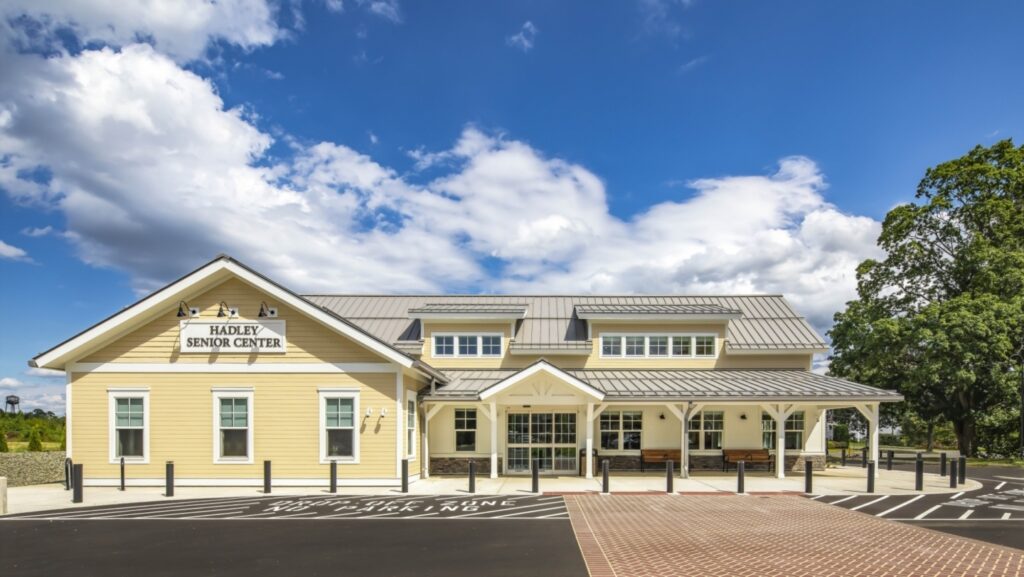
The Hadley Senior Center opened in 2020 and cost the town $7.1 million
This column appeared previously in the Amherst Current and is reposted here with permission of the author. It may not be reproduced elsewhere without the author’s permission.
How does it happen that Hadley has a large, nearly new senior center with free parking, while Amherst seniors have to settle for a few rooms in the aging Bangs Center? After all, Amherst has more than three times the number of seniors as Hadley, and much higher taxes. There are now at least 5,200 residents over 60 in Amherst, and it is the fastest-growing cohort in town.
Many Amherst seniors choose to attend programs at the Hadley Senior Center.
“I understand why,” says Jeanne Horrigan, chair of the Amherst Council on Aging. “Sadly, we can’t provide what they’re looking for in their own town.”
Dennis Vandal, president of Friends of the Senior Center, agrees. “Once upon a time, Amherst was more progressive concerning the needs of the elderly than any other town,” he says. “Things have changed. Hadley and South Hadley have evolved to have much more welcoming facilities. Northampton, too. Amherst needs to recognize its responsibility to the elderly population.”
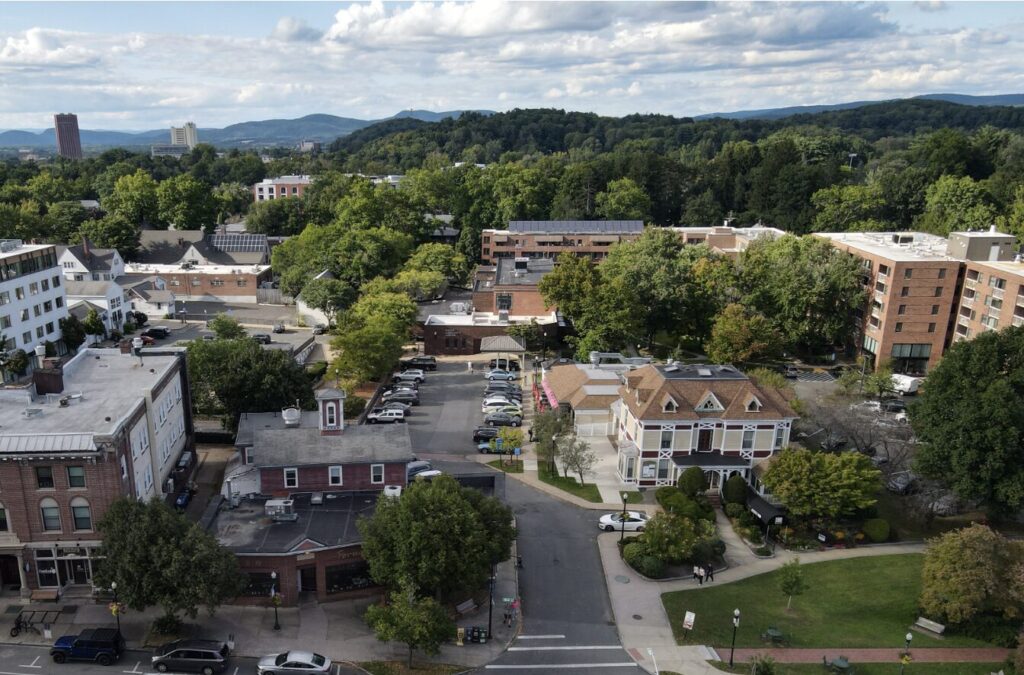
The Amherst Senior Center offers numerous exercise, education, health, and social programs in the Bangs Center. But only about 20 percent of Amherst seniors use them.
Many find it hard to navigate the limited parking and the system for paying to park. An old PVTA van provides transportation only 18 hours a week. Seniors have to go up and down stairs in the Bangs Center to access many of the programs, a burden for those with mobility challenges. When planning programs in these other rooms, there’s competition from other organizations.
The tiny kitchen is largely unusable. The Senior Center has $15,000 worth of exercise equipment (provided by an earmark secured by Rep. Mindy Domb), but it is sitting in storage in a room that lacks adequate floor stability and ventilation. The Bangs Center itself needs major improvements in its heating, cooling, ventilation, fire suppression, and accessibility. Water damage is visible in the ceiling of the senior center and there are tears in the walls.
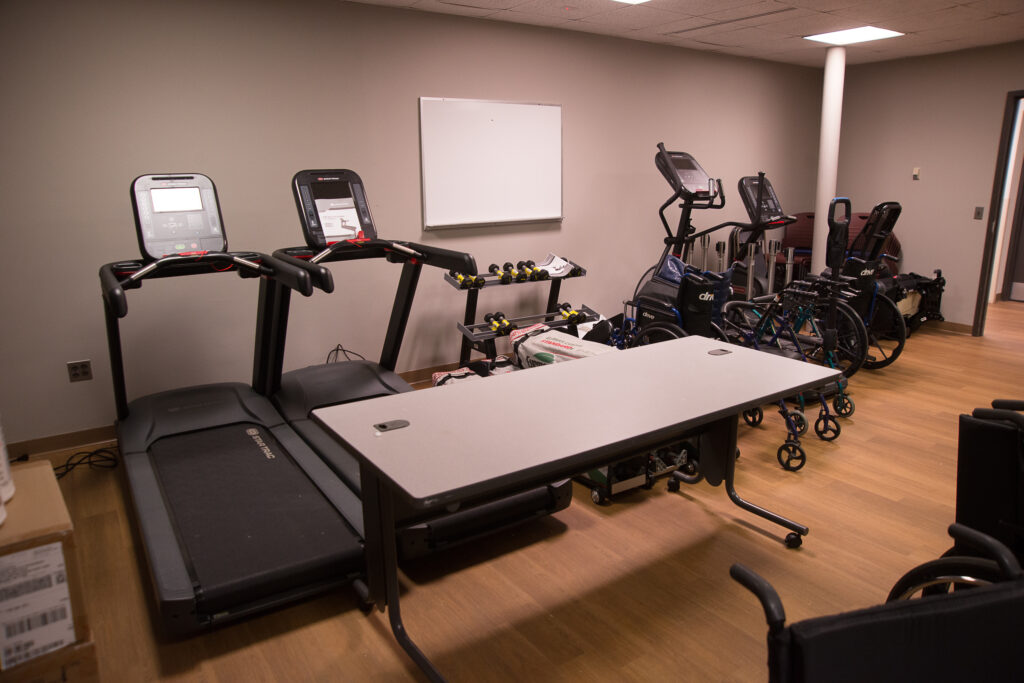
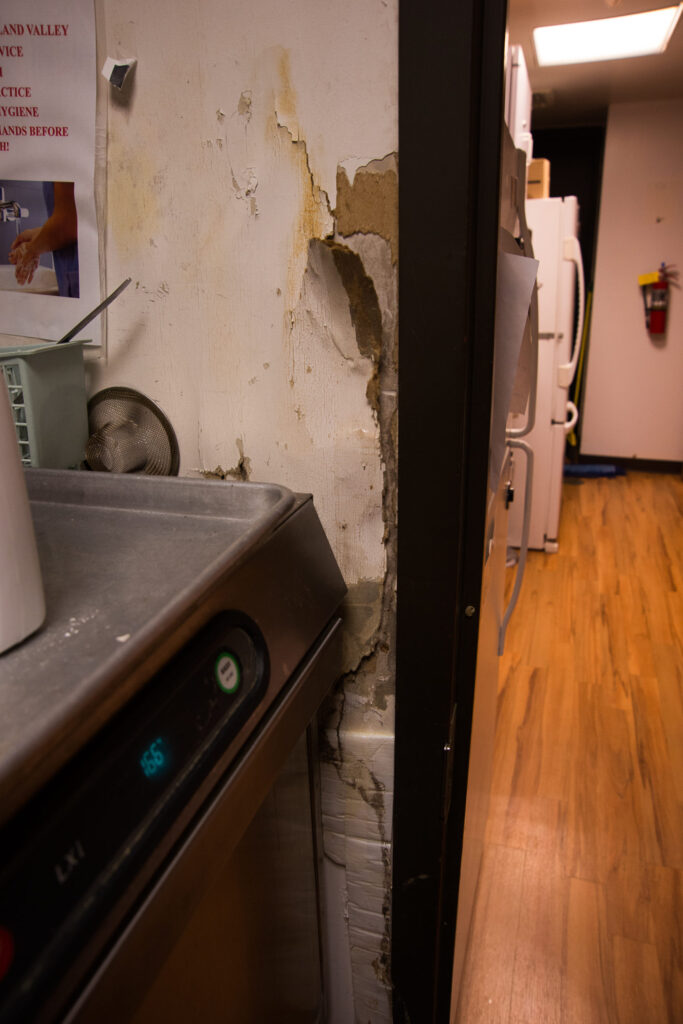
Town Councilors George Ryan and Jennifer Taub have made the case for better facilities. “A well-resourced senior center should be an essential service the Town of Amherst provides,” Taub says.
Hayley Bolton, director of the Senior Center, does a heroic job, says Taub. “Hats off to Hayley and her staff, who work hard to deliver services with the limited space and resources they have to work with,” she said.
The center has four full-time employees and over 60 volunteers.
The Hadley Senior Center
Nora Meyer, 76, is one of the Amherst residents who use the Senior Center in Hadley. She’s one of the 28 percent of those visiting the center who live in other towns.
“Amherst needs a new center,” Meyer says. “People pay taxes and now seniors are not getting what they should be getting at this point in their lives.”
While the Amherst Senior Center has 2,000 square feet of dedicated space, the Hadley center has 10,350 square feet. The average annual tax bill for Amherst residences is $9,610, compared to Hadley’s $5,279.
Hadley opened its new senior center in 2020, spending $7.1 million on the project. It sits just behind the relatively new $8.1 million public library, near the center of town.
The Hadley Senior Center is filled with natural light. It has a dedicated exercise room, a 600-square-foot art room, a pool table, and a comfortable lounge where seniors can sit and chat. It’s such a pleasant place that the Hadley Select Board meets there instead of at Town Hall. It feels more like a community center, says volunteer Cynthia Wade.
And it’s all on one floor.
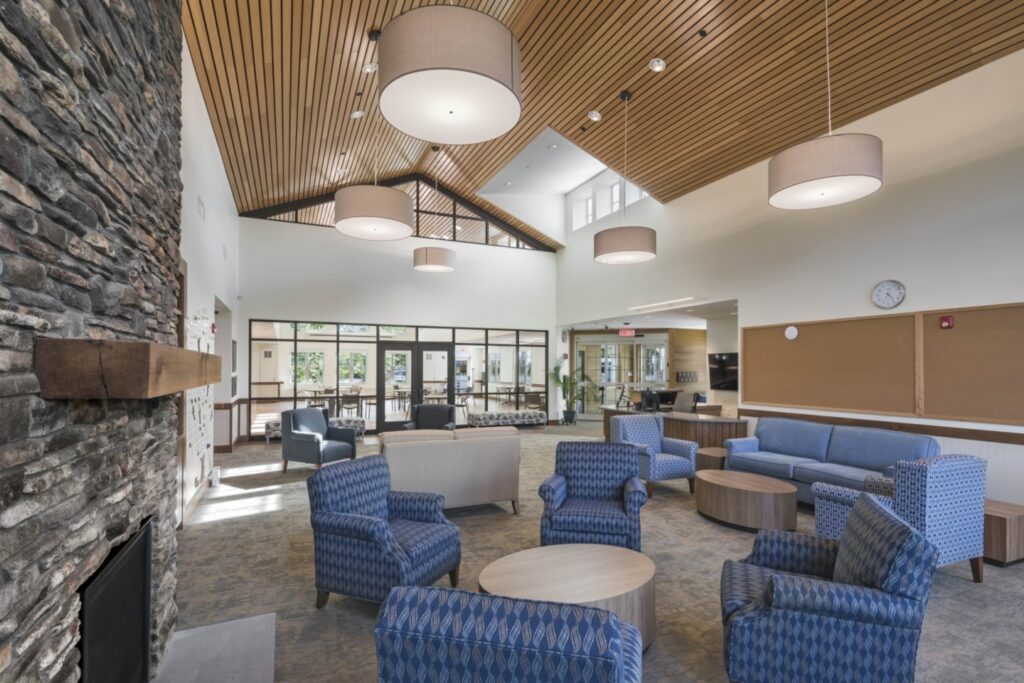
The center has a program called “How to Say Hello to Your Computer.” A nurse comes in once a week, whereas in Amherst a nurse visits for two hours a month. A massage therapist comes to the Hadley Senior Center once a month.
Seniors can get help with their taxes and health insurance, and the center lends out walkers and bath chairs. There are book readings, shows, plays, a knitting group, even demonstrations of Chinese cooking,
The Hadley center has five employees and more than 100 volunteers.
Niki Liquori, the senior services director, did an informal survey at the Senior Center, talking to both Hadley and Amherst residents. “The number-one response was that seniors want their own building, a dedicated space for seniors,” she says. “A multi-use building with a variety of ages is intimidating and unappealing. Seniors want to engage with like people.”
Nora Meyer, sitting in a comfortable chair at the Hadley Senior Center, sees a need for a change of attitude. “We need to get rid of the stigma of a senior center in a dingy and dark space where people play Bingo,” she says. “We need to think in a forward way.”
Expanding the Amherst Senior Center
Amherst will not be getting a new senior center with free parking like the one in Hadley.
“We’d love to see it, but it’s highly unlikely in the foreseeable future,” says Horrigan. In part, that’s because many seniors live in the Clark House and Ann Whalen Apartments, which are close to the Bangs Center.
“It would be lovely if the Senior Center could move to Hickory Ridge, where seniors could sip on coffee and watch the snow slowly fall on solar panels, but that would be deeply unfair to the folks at the Clark House and Ann Whalen,” Vandal says.
Besides, Amherst has prioritized construction of a multi-million-dollar fire station in South Amherst and a new headquarters for the Department of Public Works. And unlike Hadley, Amherst doesn’t get a lot of tax revenue from its commercial sector, and it has a lot of land that’s exempt from property taxes.
The rise in the number of seniors in Amherst (while the under-18 population is declining) may indicate that it is becoming a retirement destination. Or perhaps most of the people who can afford Amherst’s high house prices are seniors who have sold their longtime residences elsewhere.
The best Amherst can hope for in a senior center is probably to expand the current one on its existing floor. There is $2.5 million in federal money available to spend on upgrading the Bangs Center, but the first priority for that money is getting it in compliance with the building code.
“We don’t know if there will be money left over,” Horrigan says.
An architectural firm has been hired to look at a possible expansion. That could enable the creation of a fitness room where the exercise equipment could be used. Or maybe there could be an arts and crafts room.
“This would allow us to build a stronger community at the Senior Center while relieving the pressures of sharing space with so many others,” says director Bolton. “We could create more regular, consistent programming, which is in demand, especially post-pandemic. Right now, most of the new programs we offer are one-offs because there’s not a dedicated space to maintain the program in.”
This spring, a group of graduate students at the Isenberg School of Business at UMass Amherst will do a “needs assessment,” including in-person interviews and written surveys.
If Senior Center expansion and improvements can’t come from money left over from the $2.5 million in federal money, perhaps it can come from other available funds.
For that to happen, seniors may have to become as active politically as other interest groups, attending Town Council meetings and sending emails to councilors and the Town Manager.
The American Association of Retired Persons has a formidable lobbying operation in Washington, and seniors tend to vote at higher percentages than younger citizens. Amherst seniors could flex their political muscles.
“I’m a big believer in people advocating on a local level,” Bolton says. “There are a lot of needs in the community, and there’s no reason why seniors can’t join that fray.”
